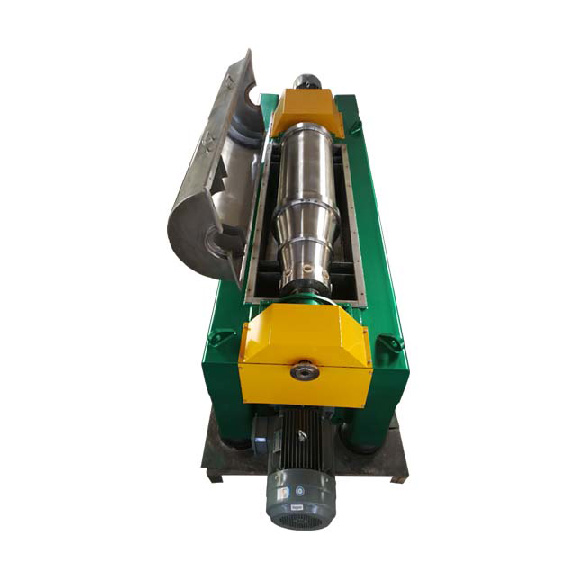How Screw Decanter centrifuge to work?
The decanter centrifuge is the only sedimentation centrifuge designed from the start to handle significant solid concentration in the feed suspension. At the same time it can achieve quite good degrees of clarification of the liquid concentrate. Although a complicated piece of machinery it embodies a simple principle. They consist basically of a horizontal cylindrical bowl rotating at a high speed, with a helical extraction screw placed coaxially. The screw perfectly fits the internal contour of the bowl, only allowing clearance between the bowl and the scroll. The differential speed between screw and scroll provides the conveying motion to collect and remove the solids, which accumulate at the bowl wall.
The decanter centrifuge can be used for most types of liquid/solid separation. It can be used for the classification of solids in liquid suspension or for the clarification of liquids. It can also be used in the recovery of a valuable solid from its suspension in the liquid and it can wash the recovered solid from its mother liquor. The decanter can also dewater slurries to a high level of dryness and it can finally be operated so as to act as a thickener, producing clear liquid and more concentrated slurry.
Application
A decanter centrifuge separates solids from one or two liquid phases in one single continuous process. This is done using centrifugal forces that can be well beyond 3000 times greater than gravity. When subject to such forces, the denser solid particles are pressed outwards against the rotating bowl wall, while the less dense liquid phase forms a concentric inner layer. Different dam plates are used to vary the depth of the liquid – the so-called pond – as required. The sediment formed by the solid particles is continuously removed by the screw conveyor, which rotates at a different speed than the bowl. As a result, the solids are gradually “ploughed” out of the pond and up the conical “beach”. The centrifugal force compacts the solids and expels the surplus liquid. The dried solids then discharge from the bowl. The clarified liquid phase or phases overflow the dam plates situated at the opposite end of the bowl. Baffles within the centrifuge casing direct the separated phases into the correct flow path and prevent any risk of cross-contamination. The speed of the screw conveyor may be automatically adjusted by use of the variable frequency drive (VFD) in order to adjust to variation in the solids load.
bio-equip.cn




